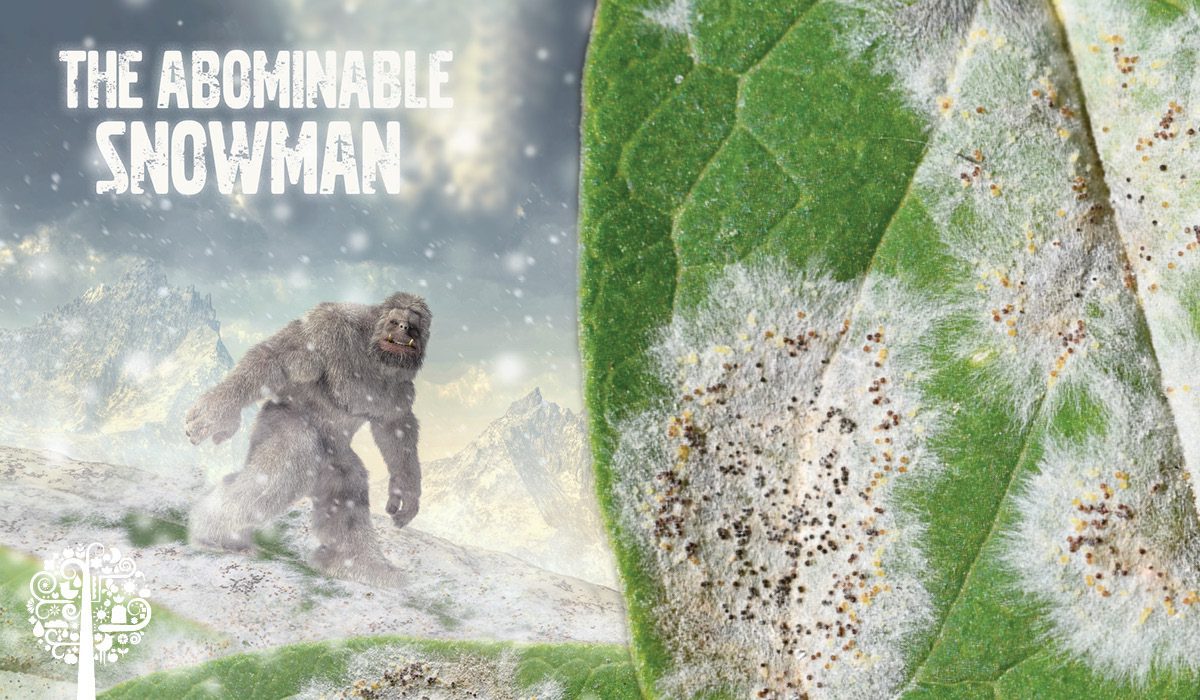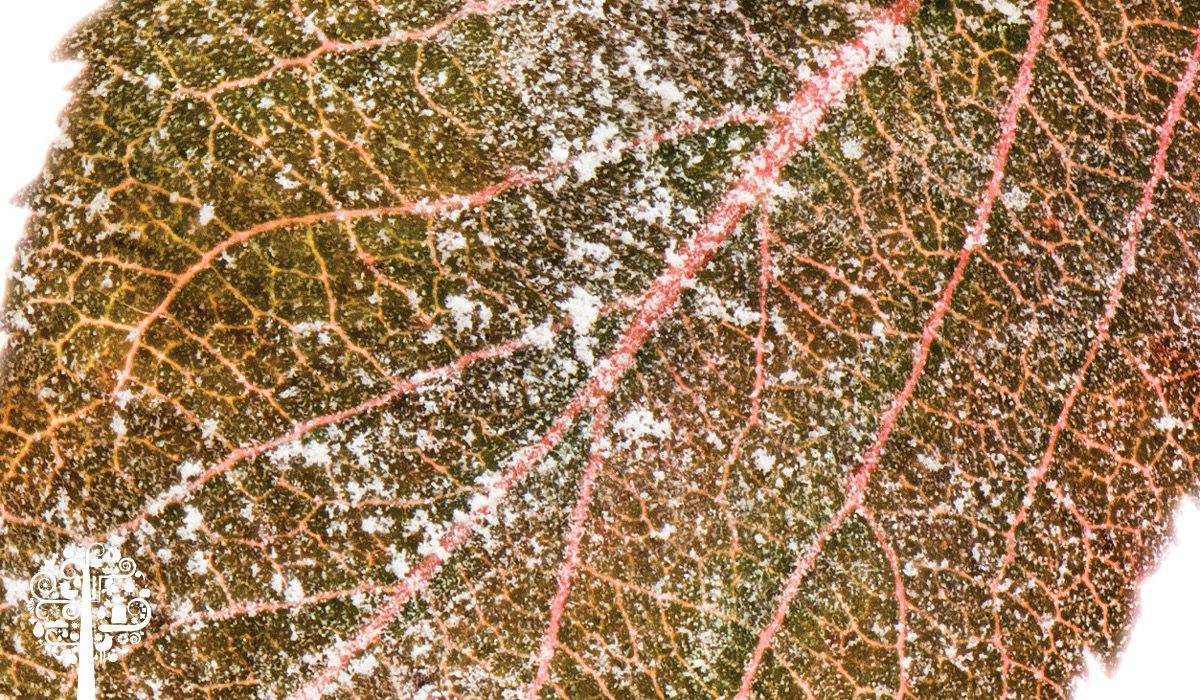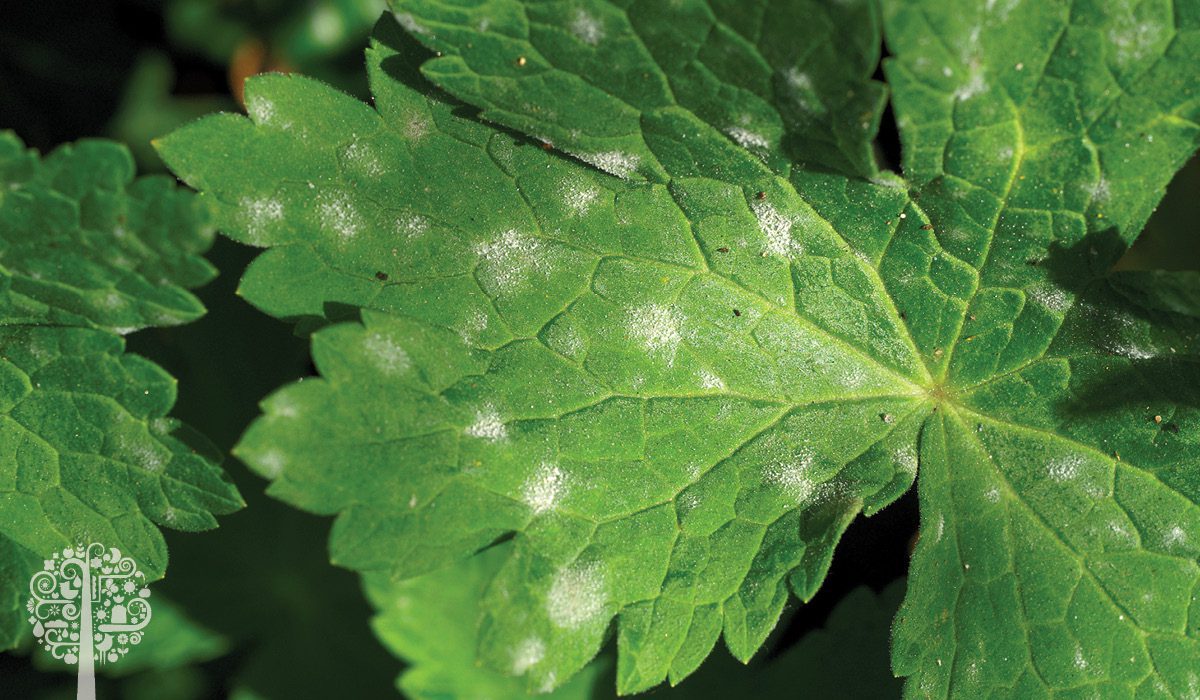The Garden’s Abominable Snowman: Tackling Powdery Mildew
This article of Science Corner looks at the plague of the abominable snowman, or more specifically, the all too common curse of powdery mildew. What is it, and why do plants get this disease? Why is it so challenging to eradicate, and what are the steps growers need to take once it develops? Let’s have a look.
What is Powdery Mildew?
Powdery mildew is a biotrophic fungus that uses living plant cells as a food source. It travels through the air as spores, which germinate on the leaf surface and produce tubes. These tubes expand over the leaf cell and feed on its nutrients. They pierce the epidermal layer of the cells using small structures called haustoria.

For the most part, powdery mildew remains on the plant surface; the visible part of the disease infects other plants. As the fungus extracts nutrients from the leaf, it forms structures called conidiophores, which produce conidia. Conidia travel and infect the other plants in the garden.
Now you know the scientific names for this pain-in-the-bum problem, but unfortunately, it won’t help you get rid of it any quicker.
The Spread
The conidia move through air movement and touch when indoors. The spread can be due to plants being too close together or the gardener touching infected leaves and then working on healthy plants. Common indoor grower knowledge is that high humidity and low air movement are the conditions that allow for powdery mildew. However, there are some nuances to this commonly held belief.
Powdery mildew is not resistant to water, so outdoors, the rain does a good job keeping the disease at bay. The spores pop when they are in contact with water for a few hours. The conidia don’t need water or nutrients to germinate, but rather, stable temperatures of 20-24°C.

Low air movement, high humidity, and the aforementioned ideal temperatures cause powdery mildew. However, while high humidity increases the germination rate, it also inhibits spore production, so moisture may not have as big an impact as you might think. It is critical to be careful of the constant and continuous handling of infected and healthy plants. If you spot powdery mildew, do not start any significant plant-handling work.
Another possible cause of spread? If a grower takes cuttings from an infected plant with no visible symptoms, the cuttings will still have the powdery mildew mold. Of course, young cuttings need low air movement with high humidity to do well, and therefore, the plant battles the disease from day one.
Why Plants Develop Powdery Mildew
Powdery mildew isn’t something the grower creates; it’s something that is allowed to happen. The same is true for most fungal and bacterial infections. Bacteria, viruses, and diseases are everywhere at all times. They are merely waiting for the perfect environment to flourish. When minimal to no air movement and high relative humidity present themselves, powdery mildew has the ideal conditions to germinate. As it grows, most people will notice white speckling on the leaves, similar in appearance to a dusting of white flour. The grower often touches the leaves and then inspects other plants, and is usually where the spread happens.
Preventing and Eradicating Powdery Mildew
Avoid the ideal conditions for germination! Swings in temperature can lead to moisture build-up, and plants will hit the dew point during lights-off. Try to keep plants well-spaced so the air movement can wick away excess moisture, making it more challenging for powdery mildew to spread.

Do not excessively foliar feed during the lights-off period. Be sure to do so before lights-off or an hour before lights-on. Adding extra fans will help keep the air well-circulated in the grow room.
A silica supplement will strengthen the plant’s cell walls, which will also help prevent powdery mildew. Be sure to also have adequate calcium in the feed solution, which also helps build plant cell strength. Do not add extra nitrogen; it can promote the production rate of powdery mildew.

The use of ultraviolet lights makes it impossible for mold and viruses to take hold. The high radiation destroys the mold cells and ensures anything left cannot replicate. UV lights are probably the best method of killing powdery mildew and preventing repeat infections of any diseases. They are also an excellent option for organic growers who don’t want to use chemical solutions.
Life Goes On
It’s not the end of the world if powdery mildew makes an appearance in the garden, as you can efficiently resolve the issue. The best advice I can offer is always to keep your environment in check; prevention is still easier than a cure. In a worst-case scenario where powdery mildew covers more than 50% of a leaf, strip it from the plant and immediately dispose of it. Take special care not to transmit this powder to other plants and keep movement to a minimum.




